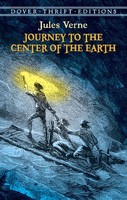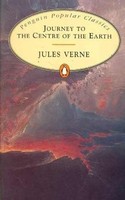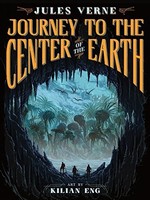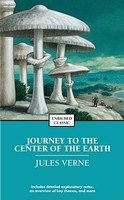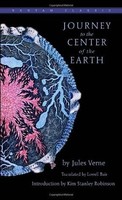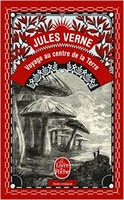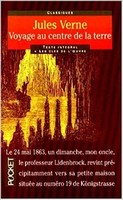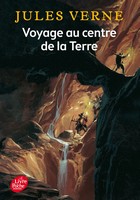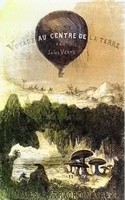 Original title: Voyage au centre de la Terre
Original title: Voyage au centre de la Terre
English title: Journey to the Center of the Earth (wydawane także jako A Journey to the Centre of the Earth i A Journey into the Interior of the Earth)
Author(s): Jules Verne
Release year: 1864 (FR),
Publisher: Pierre-Jules Hetzel (FR)
Why in Database: Absolutely classic adventure book – with three fragments with mentions of turtles, all of them we quote below (translated by Frederick Amadeus Malleson):
Still my imagination carried me away amongst the wonderful speculations of palæontology. Though awake I fell into a dream. I thought I could see floating on the surface of the waters enormous chelonia, pre-adamite tortoises, resembling floating islands.
Hans wants to tack to get away from this dangerous neighbourhood; but he sees on the other hand enemies not less terrible; a tortoise forty feet long, and a serpent of thirty, lifting its fearful head and gleaming eyes above the flood.
Flight was out of the question now. The reptiles rose; they wheeled around our little raft with a rapidity greater than that of express trains. They described around us gradually narrowing circles. I took up my rifle. But what could a ball do against the scaly armour with which these enormous beasts were clad?
We stood dumb with fear. They approach us close: on one side the crocodile, on the other the serpent. The remainder of the sea monsters have disappeared. I prepare to fire. Hans stops me by a gesture. The two monsters pass within a hundred and fifty yards of the raft, and hurl themselves the one upon the other, with a fury which prevents them from seeing us.
At three hundred yards from us the battle was fought. We could distinctly observe the two monsters engaged in deadly conflict. But it now seems to me as if the other animals were taking part in the fray—the porpoise, the whale, the lizard, the tortoise. Every moment I seem to see one or other of them. I point them to the Icelander. He shakes his head negatively.
”Tva,” says he.
”What two? Does he mean that there are only two animals?”
”He is right,” said my uncle, whose glass has never left his eye.
”Surely you must be mistaken,” I cried.
”No: the first of those monsters has a porpoise’s snout, a lizard’s head, a crocodile’s teeth; and hence our mistake. It is the ichthyosaurus (the fish lizard), the most terrible of the ancient monsters of the deep.”
”And the other?”
”The other is a plesiosaurus (almost lizard), a serpent, armoured with the carapace and the paddles of a turtle; he is the dreadful enemy of the other.”
And leaving Hans to his work we started off together. The space between the water and the foot of the cliffs was considerable. It took half an hour to bring us to the wall of rock. We trampled under our feet numberless shells of all the forms and sizes which existed in the earliest ages of the world. I also saw immense carapaces more than fifteen feet in diameter. They had been the coverings of those gigantic glyptodons or armadilloes of the pleiocene period, of which the modern tortoise is but a miniature representative.
